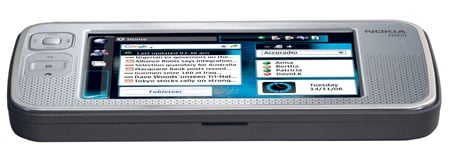This article is more than 1 year old
Nokia N800 internet tablet
It's a phone... but not as we know it...
Review The original Nokia tablet, the N770, was something of a departure for the Finnish phone maker: here was a device without cellular connectivity, running a Linux-based OS, and generally unlike anything Nokia had produced before. So here we have an updated version, the N800. But is it a phone or not, that is the question?
The N770 was widely considered an aberration: a skunkworks - officially non-existent - project that had reached fruition and might provide an interesting platform for development or demonstration. Some technical staff convinced their bosses to buy them an N770 on that basis, and some bought one for themselves, but sales were minimal and the whole thing generally had nothing to do with the mobile phone business.
The N800 still feels like a skunkworks project: it lacks the finesse of a typical Nokia product in both usability and stability, and it's unclear quite who the product is being aimed at. But it does offer some real new usage models and a glimpse to a future where handset manufacturers are no longer beholden to network operators to get their products to consumers.
Larger than all but the most unwieldy mobile phones, the front of the N800 is filled with an exceptionally clear screen, offering 800 x 480 resolution. The screen is touch-sensitive, usable with a finger, but easier with the stylus that slides out from the back of the device. The screen lacks the surface film visible on most touch-screen devices - and thus the reflection that goes with it, making N800 clearer and brighter than similar devices.

The interface is driven from a Home screen comprised of applets that can display data as well as providing shortcuts to applications. Examples include an RSS display, an internet radio player, a contacts list and a clock. Clearly Nokia is hoping that third-party developers will create new applets, as well as other applications for the platform. Installation of additional applications is automated, and though there is currently only one available - a streaming media client, which works well - the process is simple and intuitive. Installed applications can be accessed through the menu system, using either on-screen controls or buttons.
